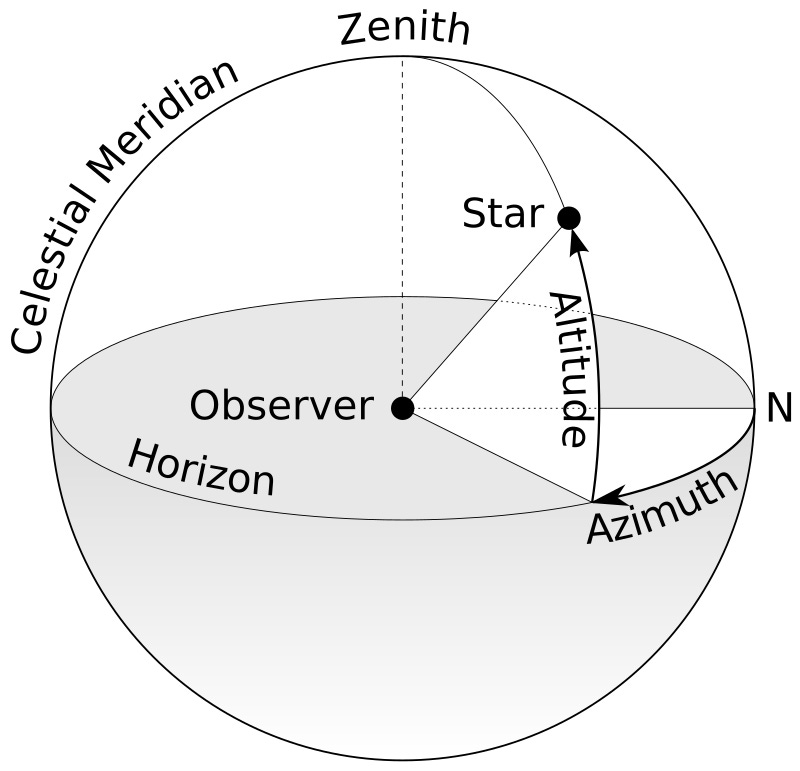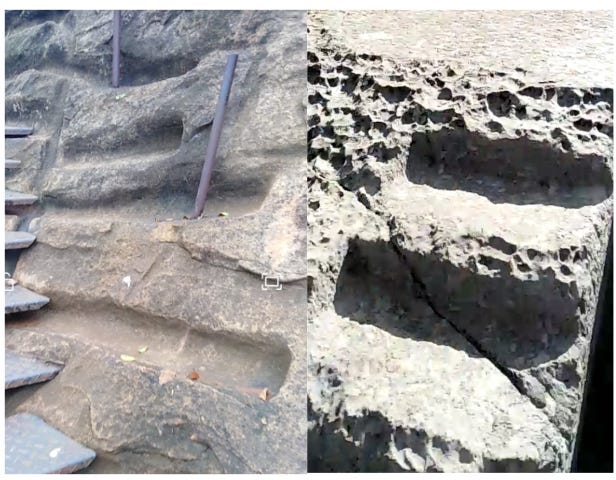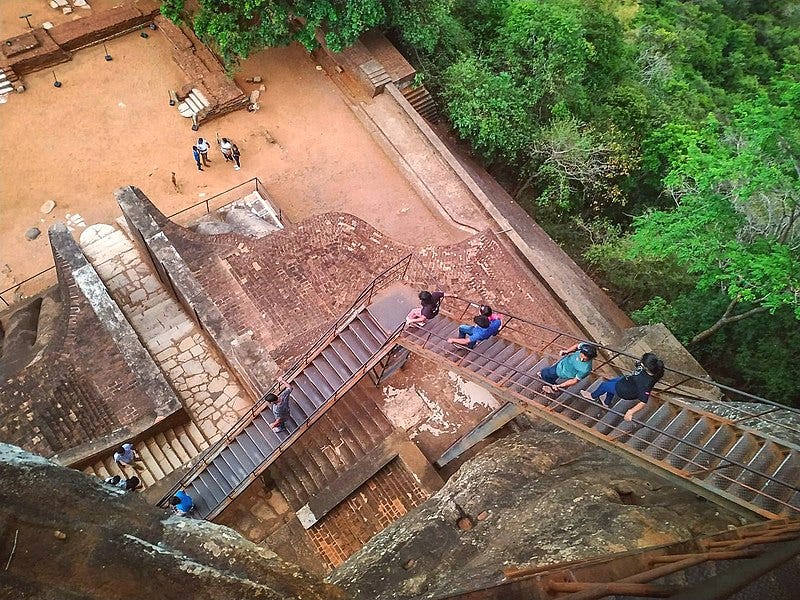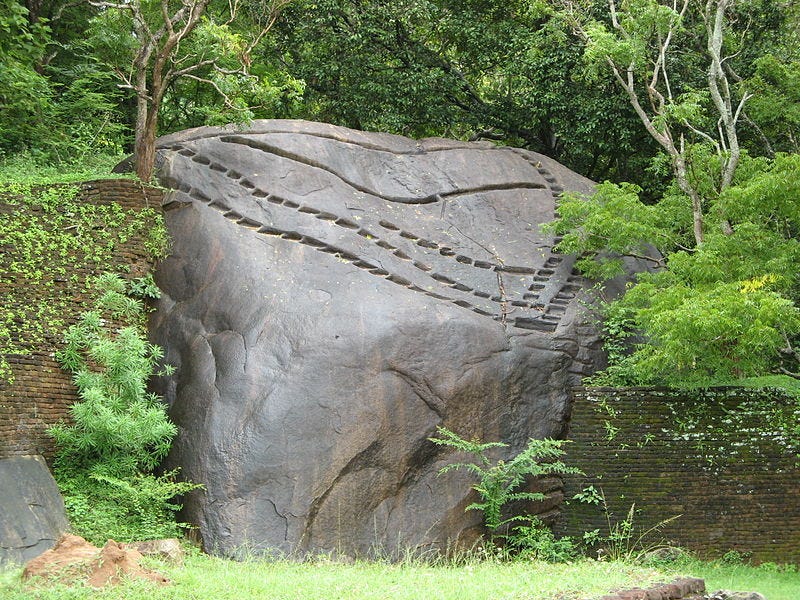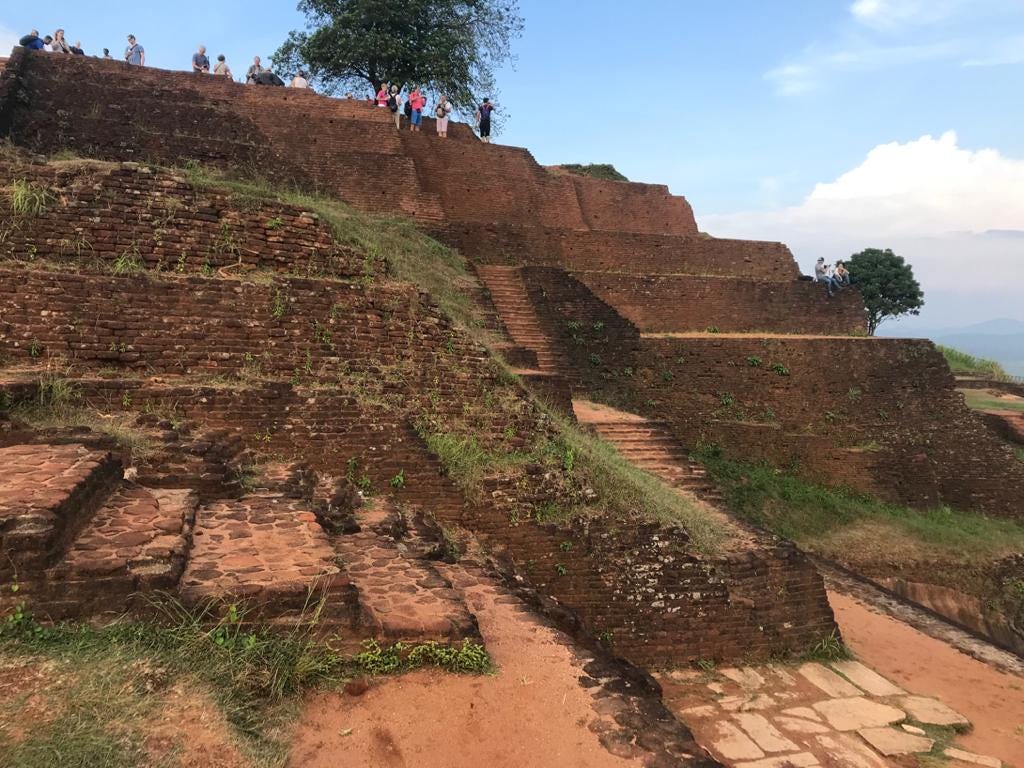Whilst not imperative, I would urge you to consider reading Part 1 of this article before jumping in here. Many of the ideas will have more context and context is not everything but it is a lot.
Ancient Archaeoastronomy
The corridors of history are sharp and windy. Dark recesses and one-way doors litter the way. Many things get lost in those long stretches of time. Human experience etches itself into the walls trying so hard not to be forgotten but forces larger and more powerful often prove too abrasive, successful in erasing our marks.
Many researchers believe that somewhere along these corridors were prehistoric civilizations and high-cultures present on Earth, their marks barely visible covered over by the winds and sands, forgotten for so long, only now slowly being remembered. It appears that one unique trait of these civilisations was to create, or at least facilitate the creation of, astronomically-aligned megalithic structures. The purposes of these sites are still hotly debated to this day. Could a similar strand of lost civilization, or at least the influences of one, be poking its head above the canopies of prehistoric Sri Lanka? Did it try to etch itself into the walls, only to be almost washed away by something else?
I first thought about this after finding myself in the official Sigiriya Museum, on a very wet and humid mid-February day. A scaled-down diagram of the Sigiriya complex had caught my eye. It showed in great detail the layout of the various sites around the rock, accurate miniatures perfectly chosen to display what the archaeological remains may have once looked like on top of the rocky citadel itself. In the corner of the display case I curiously noticed a small compass, thoughtfully put there to allow the visitor a sense of aerial orientation with the site. What struck me was the apparent orientation that the site had to the east, exactly the same direction I had been facing whilst perched atop Pidurangala rock, watching the sun rise over the citadel earlier that same day.
To say the complex is aligned along a true east-west axis would be false; it is actually inclined by 9°. According to Italian researcher Amelia Sparavigna in her 2013 article, published in the International Journal of Sciences, this off-set suggests a deliberate alignment with a specific azimuth of the sun. Her paper concluded:
“... the Sigiriya complex was planned with respect of an axis oriented with the sunset of the zenithal sun, that is, oriented with the sunset of a day when the sun reaches the zenith [its highest point in the sky]” (Sparavigna, 2013, P. 62).
A diagram I hope visually details the concept of “azimuths” and of the “zenithal” sun, much more efficiently than my words can. Note: the “observer” in this case would be upon the Sigiriya Complex. (Joshua Cesa/ CC BY-SA 3.0)
It would be another year until I collaborated with Amelia during a research project I was conducting on a potentially deliberate astronomical alignment of the Japanese megalithic site Ishi-no-Hoden. I have since learned that an azimuth is the astronomical measurement that, when combined with elevation, helps to work out and define the position of a certain celestial body (e.g. the sun, moon, star or planet) as observed at a certain time of day, from a particular location on Earth. Quite clearly, at the most fundamental level, there must be some advanced astronomical knowledge behind this alignment. Wisdom manifesting itself within the Sigiriya complex.
This alignment not only draws parallels to that of the various monuments of Giza, but further a 2017 Ancient Origins article, also suggests this style of alignment was present far away, at a site known locally as Ñaupa Iglesia. In March 2024 I was fortunate enough to visit this site, deep within the Sacred Valley that scores through the Peruvian Andes. Salazar Garcés, the Scientific Director of Planetarium Cusco, keenly notes how the “axes of the Ñaupa Waka stone altar, projected at certain times of the year, point to positions of stars and constellations…” (Walton, 2017). Periodical astronomical alignments and incorporations of measurements like zeniths are one more example of a global and very ancient sky-ground connection. Our ancestors were obsessed with the sky for many a good reason. Tides, agricultural cycles and spiritual beliefs all permeated their ancient lives.
The strange, almost out of place, stone alta at Ñaupa Iglesia, in Peru’s Sacred Valley, whose three “chambers” each align to certain azimuths, and thus specific celestial bodies during the year, in a similar vein to the Sigiriya complex. (Photo courtesy of the author).
There is another reason I find this deliberate alignment captivating. I learnt from the work of the 20th-Century American astronomer Lincoln LaPaz how azimuths are one component, alongside the objects estimated altitude, of a system built to accurately evaluate where a comet has appeared and exited from in the sky - essential when tracking meteor showers periodically throughout the year (La Paz, 1949, Pp. 513-517). Our obsession with the sky is also caused by our historically catastrophic encounters with objects falling from our skies. Reacting like atomic bombs dropped from the heavens, causing giant deformations like the Chicxulub crater off the coast of Mexico.
Mountains of work surround the Younger Dryas Impact Hypothesis. Claims that Earth’s last ice age ended abruptly, catastrophically, from the fragments of a large comet or asteroid that most likely airbursted over large parts of the world including the North American ice-sheets, have been circulating the media for some time now. Check out the avid and meticulous research of Randal Carlson at GeoCosmic REX and Professor Martin Sweatman at Prehistory Decoded for a complete assessment of the evidence to make up your own mind.
In the meantime, what I propose is this: based on Sparavigna ascertaining that Sigiriya was aligned to less than 1° accuracy with the sun when it reached its highest altitude between April 9th and September 1st, the Sigiriya complex may have functioned as a “meteor shower observatory” of sorts.
We have a confirmed azimuth angle already built into the Sigiriya complex. In theory, one would only need to stand on the citadel itself, high up above the surrounding terrain, commanding a clear view of the sky, to then begin work estimating the altitude of said object - a meteor or comet - to calculate its trajectory.
Humouring this theory, what meteor showers could these ancient builders have been trying to track? Well, the Lyrids, Eta Aquariids and Perseids each fall within the time frame of April 9th and September 1st provided by Sparavigna’s research. All are known to have had historically large, potentially hazardous, comet fragments pass through them during Earth’s annual cross-over through their orbit. From these tid-bits I speculate that the purposeful alignment of the Sigiriya Complex may in fact have been used to observe one of these three major meteor streams. Used to observe the ultimate cosmological power that can very quickly bring about global change and threaten a dominant, advanced civilisation.
Evidence for a sky-ground connection in Sri Lankan monuments has, for a long time, been shaky at best. Now, through dedicated researchers like Sparavigna and Vladimir Kovalsky, a better understanding of how the Sigiriya Complex (as well as other surrounding Sri Lankan sites) has been deliberately aligned to the cosmos, is starting to appear through the haze.
A diagram showing the slight inclination of 9° along the complex’s east-west axis. Modern research suggests this was a deliberate alignment, purposely marking a specific azimuth at a certain time of the year (diagram created by author).
Set in Stone
The alignment to celestial bodies is but one reason why we should be looking at a connection between the Sigiriya Complex and Sri Lankan sites in general, to other ancient, misunderstood sites across the world. A little while later in 2019, and again in 2024, I ran unexpectedly into another reason. This time I was over 18,000 kilometres away to the east.
During a visit to the Sacred Valley of Peru, I noticed strange indentations taken straight out of the stone at a site sitting atop a large wooded outcrop overlooking the ancient Incan capital of Cusco. Named Qenqo Chico (“Little Qenqo”) and nestled between the larger Qenqo Grande and the world-renowned Sacsayhuaman, not much is known about the purpose of this lesser known site. During the latter of my two visits a chance encounter with a local guide and defacto protector of the site led to some much needed enlightenment. Carlos moved with surprising agility between the scattered stones given his advanced age and use of a walking stick. But he had grown up around these sites. He knew them and cared for them deeply. Whilst ensuring me his words were mere speculation, the protector of stone stated that this was once a place where Inkan elites would come to meditate, to learn about cosmology, to commune with the “other” - Pachamama (Mother Nature), or some other intelligent energy. According to another guide, this was also the case with Saqsaywaman. Deep in the beating heart of the Sacred Valley, after clambering up an almost vertical terraced-slope whilst avoiding the aggressive flying fire insects that claim the land for themselves, our nimble-footed and well-versed guide Juan said the same thing about Ñaupa Iglesia. All of these sites contained these odd, almost out-of-place markings.
Whatever the purpose, the clear marks, embedded deep into the surviving stone walls and monuments, are an element that many researchers have commented on, then scratched their heads over for many decades (probably in the reverse order). Most have concluded that they were created using some yet unknown tool. Whatever the supposed tool was, it seemed to almost “scrape” away the hard rock face, leaving precise indents in its wake. Some label them as “scoop marks''; I like to refer to them as “smooth-grooved notches”. I know, it does not have the same ring to it, but I think it describes them a little better. Local experts like Jesus Gamarra have shed some light on this by speculating that the cyclopean-style polygonal walls featured around Peru’s Sacred Valley (and far beyond) may have been formed using now-forgotten techniques for softening the bedrock, possibly using intense heat (requiring temperatures in excess of 1,100 degrees centigrade) or some form of acid derived from an unknown Amazonian plant mixture (Hancock, 2015, Pp. 373-375). Is this process what led to the removal, shaping and sculpting of the sandstone, bluestone, limestone and granite-based constructions throughout the Andes?
Oddly enough, you can imagine my surprise when I was watching back an old video I had taken, close to the top of the extremely steep flight of stairs leading to the summit of the Sigiriya citadel and, in between some embarrassingly loud and laboured breaths, I noticed similar smooth-grooved notches on the face of the rock, almost identical to those I had documented in Peru on my first trip there in 2019. The most common explanation is that these were steps for the monks who inhabited the area. Having been up there myself, I can tell you that there is no way that anyone could safely let alone consistently use those shallow grooves as steps. Monk or not, it is just not feasible. Whilst research suggests “early Sri Lankans had mastered the use of different metals” (Karunathilaka, 1991, P. 107), the use of metallic tools does not go far enough to explain how the ancient people carved these notches out of the Sigiriya’s granite bedrock - one of the hardest stones to carve even with today’s modern equipment (Rich, 1988, P. 226). Layer on top of that having to hang off the side of a 180 metre sheer cliff face to do so and no, it will take more than that to convince me that these were simple steps. What these Sri Lankan grooves were designed for, and how they were formed, is just as much a mystery as the notches spread throughout South America.
Whilst in no way is this a definitive connection, coincidence begins to fade into a causal relationship when multiple factors merge together and, upon reaching the summit of Sigiriya, I was presented with yet another piece of evidence for this strange global connection, one that once again called out for further investigation.
The picture to the right was taken mid-2019 at a site just outside of Cusco, named “Qenqo Chico”. This type of smooth stone “groove” is found all over South American ruins. The Picture to the left was taken in early 2019, during my time spent on the summit of Sigiriya, Sri Lanka. Notice the similarity in cut marks, with the rock almost appearing to have been extracted by a specialist tool, “scraping” the hard rock in precise, lateral strokes - something extremely hard to replicate with simple metal tools (Photos courtesy of the author).
The steep climb up to the summit, close to where I accidentally filmed the smooth-grooved notches in the bedrock at the summit of Sigiriya. (Taken from WikiCommons).
An example of what appears to be similar smooth-grooved notches, seeming to be pressed straight into the rock's hard surface with apparent ease. Grounds of the Sigiriya complex, Sri Lanka. (Taken from WikiCommons).
Pyramids are Forever
Whilst there are very few accurate reconstructions for the Sigiriya citadel, namely because no one is really sure what it actually looked like when it was first constructed, I can only tell you from being on top of the citadel myself that there is certainly a lot more left open to interpretation than the simple “fortress-come-pleasure-palace” that is so often touted as the oversimplified narrative. The complex and unique grid system of the surrounding ground-level “reflects the high level of scientific skill, knowledge and skill with regard to measuring and setting out of monumental complexes” is one element (Cooray, 2012, P. 228). The remnants of what’s left on the citadel itself is another matter altogether. The last thing I was expecting to notice as I summited Sigiriya citadel was pyramidal designs. Despite my lack of foresight, this is exactly what I found.
I agree with independent researchers like Vladimir Kovalsky that there is a “stepped-pyramid” style of architecture present on top of the citadel. At first glance, it is similar to those stepped pyramids dotted throughout Mesoamerica. I visited a few in 2024: Teotihuacan, Chichen Itza and Coba bare some semblance. Other classic sites like Copan, Palenque, El Mirador and Tazumal contain some more. Even in Peru at sites like Machu Picchu and Tambomachay, or in Indonesia, or China, or Malta or, in reality, on almost every other continent in the world… The stepped pyramid design reaches out across time and space.
Step-pyramid style construction, present on the Sigiriya Citadel (photo courtesy of the author).
Another angle clearly showing the stepped pyramid construction method. Notice the precision-cut stairways, cut straight from the bedrock, leading directly into what has been labelled the “swimming pool” (taken from WikiCommons)
Whilst clearly the Sigiriya stepped pyramid design is in no way existing now in the same immense scale as the likes of other stepped pyramids, it is curious that we not only have similar astronomical alignments to these geographically-distant areas, but further we have paralleled, yet equally mysterious, stone carving techniques and pyramidal construction works. Separated by vast amounts of land and ocean but not style, and nor it appears - function.
As mentioned in my two previous articles, an ocean-bound and deeply ancient connection between cultures who flourished 10,000 years ago should not be hard to fathom. I believe it is this same strand of unknown culture that we are slowly uncovering now in Sri Lanka.
The better preserved Tazumal main pyramid (as viewed from the west) located in the jungles of Chalchuapa, El Salvador (taken from WikiCommons)
Could it even be that this island was part of the same vein as other now-submerged sites like Dwarka in the north-western coastal region of Gujarat, India, maybe even the likes of Gunung Padang in Indonesia? The implications this could have on the understanding of future human prehistory is astounding. It is paradigm-busting and because of this, it will be silenced when possible.
Never Forget
Whatever you may believe, I stand firmly by the notion that the largely forgotten island of Sri Lanka, overshadowed next to the cultural colossi India, has a lot more to discover than we largely understand, or even give it credit for today.
The notion that there are definite inhabitance of the island for possibly hundreds of thousands of years, especially when coupled with the faulty method of radio-carbon dating and mythical and geological evidence of mass-land submergence, is an intriguing one. Not only do we have evidence for advanced archaeoastronomy that could hint to cataclysmic comet-watching, but further stone designs like the “grooved notches'' and step-pyramidal constructions seem to connect Sigiriya, moreover Sri Lanka itself, to other megalithic monuments and sites around the world.
These connections are now more than ever starting to emerge from the fog. Beautiful yet misunderstood sites like Sigiriya, dotted throughout the tropical paradise, should warrant further investigation. The next steps of research are clear. I agree with Hancock when he states that “we should expect to find underwater ruins not only in south Indian waters, but also in the waters of the island of Sri Lanka” (2003, P. 248). Having dived myself in the Indian Ocean around Sri Lanka, I can say with certainty there is more down there than we could ever hope to imagine. I cannot wait to return to this magical place, back to the Island of the Sleeping Lion. The people are some of the kindest, most hospitable I’ve ever encountered, the food - sensational - the landscape - equally as enticing. When I return I will be looking to explore not only the land in greater detail, but also the oceans surrounding it. It is these vast, unknown worlds buried deep beneath the waves that need more depth of research as we march on, as a collective species, into whatever the future holds. Until then, we just have to explore what is in front of us, or beneath us.
Cover image: A frontal view of Sigiriya’s “lion” staircase. Evidently all that remains of the supposed staircase are the two frontal paws, along with the assumption that a great feline head was also once in place, slotted grandly above them. Where or what happened to this giant head is still an unsolved mystery... (taken from WikiCommons).
References
American Chemical Society. 2016. Discovery of Radiocarbon Dating in National Historic Chemical Landmarks. (Accessed: http://www.acs.org/content/acs/en/education/whatischemistry/landmarks/radiocarbon-dating.html)
Browne, M. W. May 1, 1990. Errors Are Feared In Carbon Dating in The New York Times (online). (Accessed: https://www.nytimes.com/1990/05/31/us/errors-are-feared-in-carbon-dating.html)
Cooray, N. 2012. The Sigiriya Royal Gardens: Analysis of the Landscape Architectonic Composition. TU Delft: Netherlands. (ISBN: 148003097X, 9781480030978).
Hancock, G. 2015. Magicians of the Gods. United Kingdom: Coronet.
Hancock, G. 2003. Underworld: The Mysterious Origins of Civilization.
Manning, S. W. et al. June 2018. Fluctuating radiocarbon offsets observed in the southern Levant and implications for archaeological chronology debates in Proceedings of the National Academy of Sciences 115 (24) 6141-6146; DOI: 10.1073/pnas.1719420115 (Accessed: https://www.pnas.org/content/115/24/6141)
Katupotha, Jinadasa & Kodituwakku, Kusumsiri. (2014). Diversity of vegetation types of the Pidurangala Granitic Inselberg, near Sigiriya, Sri Lanka: a Preliminary Study. 10.13140/RG.2.1.2564.4006. (Accessed: https://www.researchgate.net/publication/277140686_Diversity_of_vegetation_types_of_the_Pidurangala_Granitic_Inselberg_near_Sigiriya_Sri_Lanka_a_Preliminary_Study)
Rich, J. C. 1988. The Materials and Methods of Sculpture. (ISBN: 0486257428, 9780486257426)
Sparavigna, A. C. 2013. The Solar Orientation of the Lion Rock Complex in Sri Lanka in The International Journal of Sciences. 2. 60-62. 10.18483/ijSci.335. (Accessed: https://www.researchgate.net/publication/259289258_The_Solar_Orientation_of_the_Lion_Rock_Complex_in_Sri_Lanka)
La Paz, L. 1949. Azimuth determinations in meteorites by means of time readings in Science, 110, 438. (Accessed: http://articles.adsabs.harvard.edu/cgi-bin/nph-iarticle_query?1949PA.....57..513L&defaultprint=YES&filetype=.pdf)
Walton, D. 22 April, 2017. Who Built the Fascinating Ñaupa Iglesia? Mysterious Ruins in the Sacred Valley of Peru in Ancient Origins (online). (Accessed: https://www.ancient-origins.net/ancient-places-americas/who-built-fascinating-aupa-iglesia-mysterious-ruins-sacred-valley-peru-021345)
Wilhelm, G. 1929. The Culavamsa I. Oxford University Press. (Accessed: https://archive.org/details/TheCulavamsaI/page/n3/mode/2up)
Kennedy, K. A. R. & Deraniyagala, S. U.1989 Fossil Remains of 28,000-Year-Old Hominids from Sri Lanka in Current Anthropology. 30:3, Pp. 394-399. (Accessed: https://www.journals.uchicago.edu/doi/abs/10.1086/203757?mobileUi=0&)
Kennedy, K. A. R., Deraniyagala, S. U., Roertgen, W. J., Chiment, J., & Disotell, T. 1987. Upper pleistocene fossil hominids from Sri Lanka in American Journal of Physical Anthropology, 72(4), 441-461. https://doi.org/10.1002/ajpa.1330720405 (Accessed: https://nyuscholars.nyu.edu/en/publications/upper-pleistocene-fossil-hominids-from-sri-lanka)
Tikkanen, A. December 28, 2017. Great Sphinx of Giza in Encyclopædia Britannica, inc (online). (Accessed: https://www.britannica.com/topic/Great-Sphinx)
The Editors of Encyclopaedia Britannica. March 28, 2019. Pali Language in Encyclopædia Britannica, inc (online). (Accessed: https://www.britannica.com/topic/Pali-language)
Karunathilaka, P. V. B. 1991. Metals and metal use in ancient Sri Lanka in Sri Lanka Journal of Humanities. Vol. XVII & XVIII (1991 - 1992). 104-118. (Accessed: http://dlib.pdn.ac.lk/handle/123456789/2224)
Risberg, J. Myrdal-Runebjer, E. Miller, U. 2002. Sediment and soil characteristics and an evaluation of their applicability to the irrigation history in Sigiriya, Sri Lanka in Journal of Nordic Archaeological Science, (13), 27–42. (Accessed: http://www.archaeology.su.se/polopoly_fs/1.166286.1392035742!/menu/standard/file/J13_risbergetal2.pdf)






